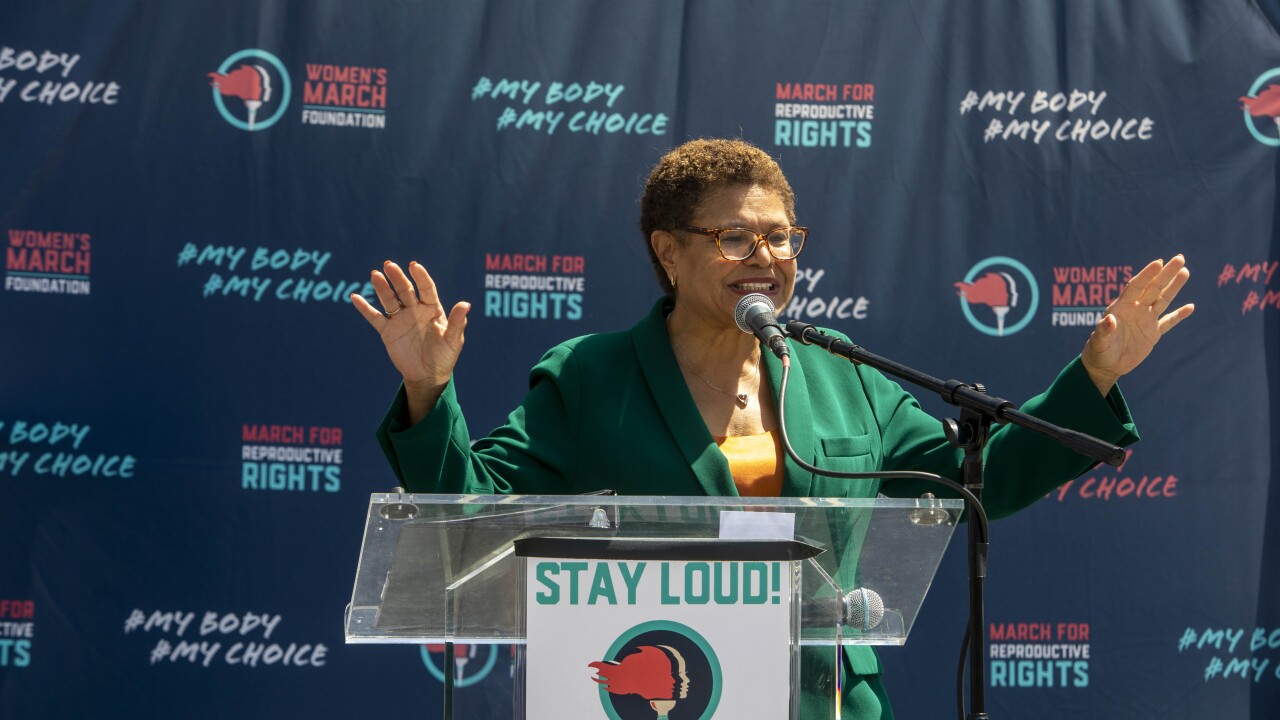LOS ANGELES — The Los Angeles City Council will vote Wednesday on whether to put a $3 billion general obligation bond measure on the May 21 ballot to fund repairs on 8,700 miles of streets.
Council members Mitchell Englander and Joe Buscaino introduced the motion on Friday.
The bond measure and accompanying property tax would have to be approved by a two-thirds margin.
One-third of the city’s streets have a failing rating of D or F and can’t be repaired with a simple slurry and require reconstruction, because the substructure has been destroyed, said Doane Lieu, Councilman Buscaino’s chief of staff.
It would cost $300 million a year to make the street repairs needed on the 8,700 miles of failing streets over the next 10 years, according to the motion.
The council members consulted with UCLA economists before deciding on the bond measure as a solution to the city’s notoriously poorly-maintained streets, Lieu said.
In the report, UCLA Anderson Forecast director Edward Leamer and senior economist Jerry Nickelsburg contend the bond measure would constitute “good borrowing,” because it allows the community to acquire an asset that would enhance property values.
The City Council has already approved a ballot measure for the March election asking voters to increase the sales tax by a half cent to pay for city services.
The street repair measure would add $24 to the tax bill of a home valued at $300,000 the first year and $120 by the 10th year.
The UCLA economists recommended bonding for the street repairs, because the city would have the ability to lock in low rates as municipal bond rates are at 40-year lows. City leaders could also capitalize on low construction costs, the report said.
“These low rates are not likely to continue indefinitely,” Leamer said. “Now is the time to lock in these low rates – and use borrowing to fund wisely chosen projects.”
Englander approached Leamer about evaluating the issue after the economist gave a speech on taking advantage of low rates, Leamer said.
“Government has an incredible opportunity now to borrow money at low rates to support investments that will still be around a decade from now,” Leamer said.
Normally, Leamer said, street repairs should be something paid for as part of operation costs. But since the streets have been allowed to disintegrate to the point that road construction is required, a bond measure is appropriate, he said.
He added that council members are going to have to convince voters that they have a plan to fund ongoing repairs through operations after the streets are reconstructed.
“Bonds should not be used as an excuse for further inappropriate budgeting,” Leamer said.
Leamer’s litmus test on whether bonds are an appropriate funding mechanism is to look at whether the borrowing will make the next generation better off.
“Instead of environmental impact statements, I think we should have youth impact statements,” Leamer said. “We have to be forward-looking in Los Angeles. We can’t let our infrastructure deteriorate.”
Lieu said voters are expected to favor the tax increase as the largest volume of constituent complaints received by council members is about the potholed city streets.
City leaders have raised the issue of floating a bond to pay for street repair several times over the past several years, but it has gone nowhere.
Mayor Antonio Villaraigosa proposed a plan in November 2011 that he called LA Roadworks to issue $750 million in bonds backed by the city’s share of Measure R, a half cent sales tax used for transportation, to pay for street repairs for the next 27 years. The plan quietly died out.
Lieu said council members believe the time is right. In addition to council support for the measure, Lieu pointed to the recently defeated measure to extend Measure R that lost with a 1% margin. It required a two-thirds supermajority to pass.
“It was only defeated by 1% county-wide and 70% of Los Angeles voters supported the measure, so it would have won in the city,” he said.





